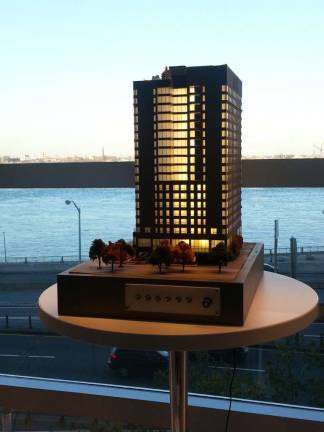End of Life Care for a Generation that Boomed

New ways of thinking about eldercare could help our aging population thrive
By Adam Janos
Jewish Home Lifecare and Himan Brown Charitable Trust hosted a Health Policy Symposium at the Alexandria Center on East 29th Street earlier this month to address growing long-term health care needs that stand to confront the baby boomer generation of America, (and New York City) in the decade ahead. Featuring keynote speaker Dr. Ezekiel Emanuel, a former special advisor to the White House, the symposium focused on the massive twin undertaking of both caring for the enormous population the boomers represent while also mitigating an employment crisis that has seen the health care workforce shrink at a time of peak need.
Dr. Emanuel sounded some alarms by noting the enormous cost of our health care system ($2.87 trillion), its unparalleled growth ($100 billion extra in the last year), and the inefficiency of spending, but ultimately struck an optimistic chord with his hope for the forward progress he believes President Obama's Affordable Care Act will usher in.
Emanuel focused on the various anchors dragging the health care budget down, and addressed balancing the needs of the industry to both keep quality at a premium and spend responsibly so as to keep services within the realm of affordability for the cash-strapped state governments and ordinary Americans who face an increasingly challenging marketplace that continues to price more and more people out. For Emmanuel, tertiary out-of-hospital care is a crucial part of that formula, as is psychosocial counseling, and better preparedness by doctors to provide end of life care to the aging populace.
Panelist Jane Rowe, (Senior Advisor for Program Development, Robert Wood Johnson Foundation), kept the lion's share of her comments on finding "better models for people to age with grace and dignity." Lowe touted the "village model," in which a pool of resources are available to people as they age, and mentioned specifically the Green House Project as the vanguard in such work.
The Green House Project aims to provide residential care for geriatrics that provides the support of a nursing home while still allowing its residents the autonomy, warmth, and respect of a traditional house or apartment.
The project, which started in Tupelo, Mississippi, aims to de-institutionalize residential elderly care. They pay staff higher wages and, as a result report lower turnover rate. They also report more visitors, (which they credit to a brighter atmosphere that encourages family to return), less depression in their residents, and a lower rate of hospitalization. Currently, there are 150 such homes in 26 states, and ? unlike traditional nursing homes ? the project is available for those on Medicaid.
Jewish Home Lifecare has recently been approved by the Department of Health to build the Living Center of Manhattan at West 97th Street between Amsterdam and Columbus, in which Green House residences would become available at a city scale. 10-12 residents would live in each home, which would represent half a floor in the building. Each resident would have their own private bedroom and bathroom, with a shared central dining and recreational area. With eleven floors and two "homes" per floor, the Living Center will be the first of the Green House model in New York City. Building is set to begin in 2014, and the institution hopes to complete plans 32 months thereafter.